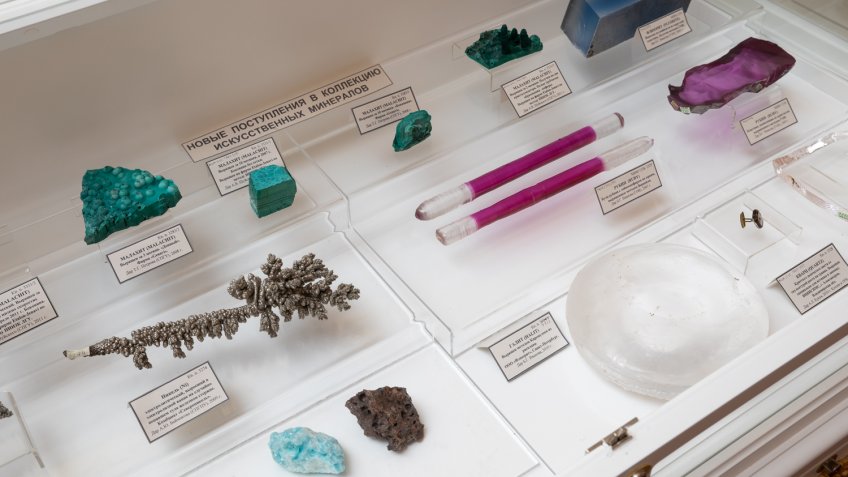
The Mining Museum's archives were found to store records on which is based the world's first-ever technique of silicate replica smelting.
The "Nature-Like Technologies and Synthesis of Next-Generation Materials" exhibition, which is held at the Museum, was timed to the 85th anniversary of the foundation of the first Russian laboratory of experimental mineralogy and petrology. Research studies completed within the lab played a pioneering role in industry development, as well as they gained international recognition.
Dmitry Grigoriev, a Soviet mineralogist and professor at the Mining Institute, was the one who initiated the establishment of the lab. He was also the first person to have ever synthesised amphiboles and magnesia-iron ores. An industrial technology of producing these minerals was elaborated and made possible through his discovery. Due to the low conductivity and resistance to heat and solar radiation, they are now used in the car industry and rocket engineering.
In 1937, only two years later, there were already seven wall cabinets and four glass cases full of artificially grown minerals inside the Mining Museum. Before that, the most extensive collection of similar type was the one of the Natural History Museum in London. Yet it was fitted into a single display case.
"Our exposition is an updated and expanded version of that first collection. It is a place whereto we have gathered records on the world's first-time synthesised melts of silicate replicas and their reference samples, along with numerous varieties of synthetic gemstones and metals. Altogether over a thousand and a half exhibits are on display. And they are indeed not only a display material but also a perfect foundation on which a scientific study may be built," said Alexandra Gavrilchik, the exposition's curator and researcher at the Mining Museum.
Nowadays, synthesised minerals found use in the manufacturing of high-precision and sophisticated equipment and different kinds of digital devices too. A strategic objective for specialists who are involved in production and modification of synthetic minerals lies in delivering prototypes of nature-occurring compounds and substances with a particular set of physicochemical properties and processing characteristics.
Photos below showcase the Mining Museum's exhibits: 1, 2, 3 - specimens of artificial quartz, 4 - synthetic ruby.




